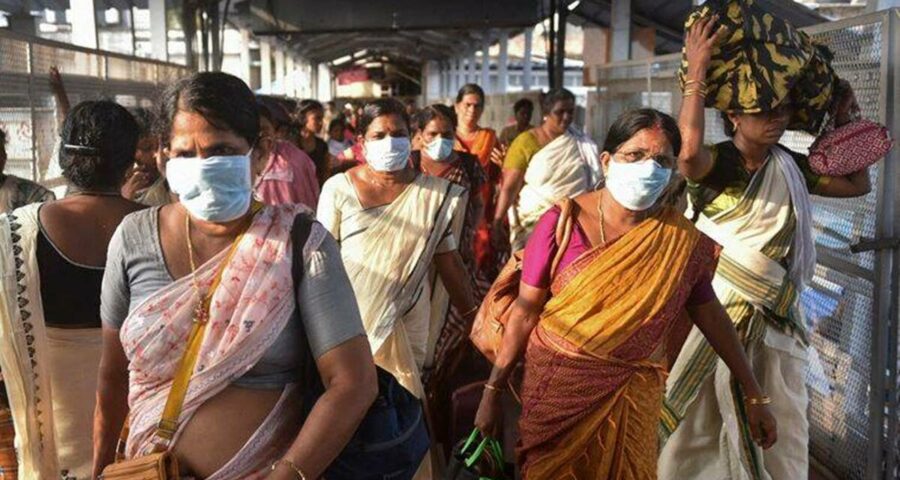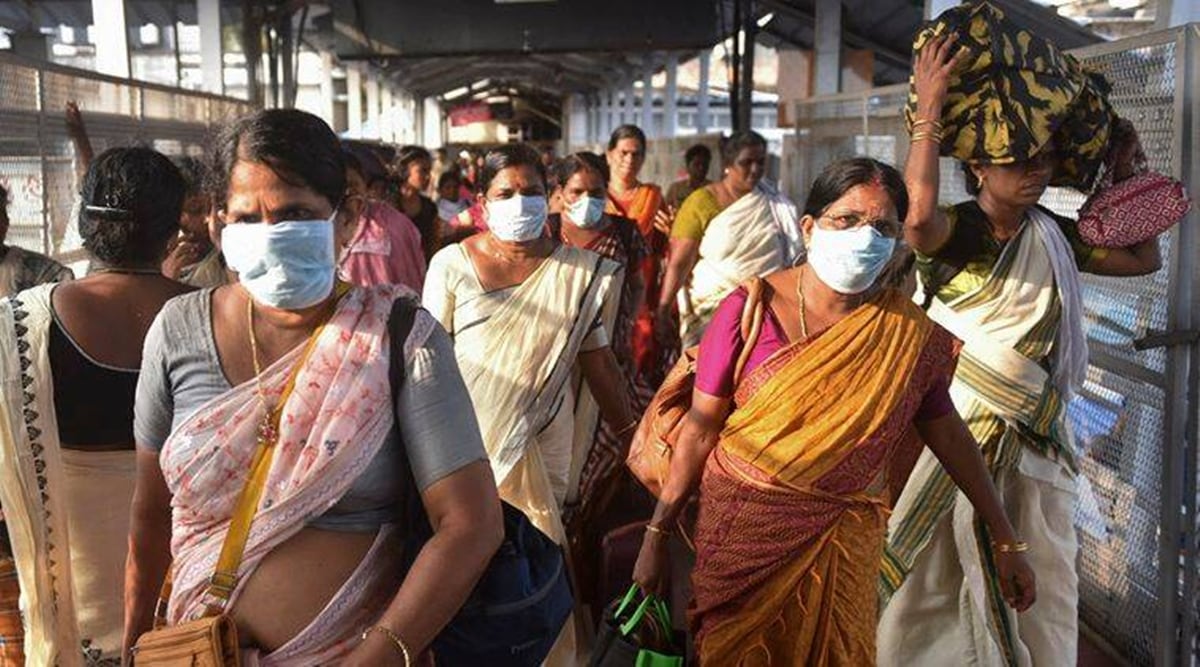In eight out of 14 districts, the infections have come down by 10 to 30 per cent. With recoveries eclipsing new infections in the past week, the state’s active caseload has dropped by over a lakh.
Two weeks into a state-wide lockdown, Kerala has begun to show a plateauing of Covid-19 cases, if not a sharp decline.
The test positivity rate (TPR), which touched nearly 30 per cent on May 12, was at 23.18 per cent on Thursday, the lowest in three weeks. Daily new infections, which had crossed the 43,000 barrier on May 12, have also come down to around 30,000. The seven-day average daily growth rate, helpful in understanding the spread of the virus, had crossed 2 per cent in the first week of May. On Thursday, it was at 1.5 per cent, though the ideal rate is below 1 per cent.
The corresponding period has however seen a spike in daily deaths in absolute numbers in the state, widely seen as a consequence of the surge in infections in past weeks and the severity of the new variants. Till March 31, the state had recorded a total of 4,621 deaths. Since then, in less than two months, over 2,200 people have succumbed to the virus with half of them in the last two weeks alone. The overall case fatality rate in the state may be 0.3 per cent, but there’s no denying that more people, especially of a younger age-group, are succumbing to the fatal effects of the virus in the second wave of the pandemic.
It was after much prodding by expert groups like the Indian Medical Association (IMA) that the state government imposed a lockdown in the first week of May, with special air-tight restrictions (in the form of a triple lockdown) in four districts of Ernakulam, Thiruvananthapuram, Thrissur and Malappuram. In these districts, all movement of the public, except for emergency and essential services, have been curtailed for over a week in the backdrop of a majority of panchayats reporting TPR of over 50 per cent.
Though the situation in the capital district of Thiruvananthapuram and the business hub of Ernakulam have eased considerably, Malappuram continues to report a TPR of over 30 per cent, casting doubts on the efficacy of the lockdown there. Chief Minister Pinarayi Vijayan said Friday while ‘triple lockdown’ restrictions will be withdrawn from all districts except Malappuram from May 23, the general lockdown across the state will continue till May 30.
Has Kerala crossed the peak of the second wave?
That’s the big question facing the government and health experts.
“We can’t confidently say that right now,” said Dr Gopikumar, state secretary of the Indian Medical Association (IMA) who’s been analysing the patterns of the pandemic closely in the last two months.
“The cases being reported today are from the transmission in the first week of lockdown. It’s between 4-7 days of being infected that a person’s condition turns severe. Right now, ICU beds and ventilators are still full and there are more patients being hospitalised right now. If the number of patients with serious illnesses rises, we will have more problems. I think we will have to continue the lockdown for a few more days,” he added.
On May 17, CM Vijayan said the state has likely crossed the peak as evidenced by the dip in the test positivity rate. “The experts are of the opinion that the peak of the disease spread is over. But that is not a green signal to lower our guard,” he had said.
In eight out of 14 districts, the infections have come down by 10 to 30 per cent. With recoveries eclipsing new infections in the past week, the state’s active caseload has dropped by over a lakh.
But Dr Joseph Chacko, president of the Kerala Government Medical Officers Association (KGMOA), believes the dip in cases is not enough to say if the peak has been crossed. “Our test positivity rate is still in the early 20s. The effects of the curfews and the lockdown are there and the cases are going down. But there hasn’t been a sharp decline,” he said.
“One of the reasons could be the high transmission of the virus within a household. It doesn’t take long for the virus to spread from an asymptomatic person to many members of his/her family. An asymptomatic person goes outside, gets the virus and transmits it unknowingly to his family,” said Dr Chacko.
While a lockdown cannot be extended indefinitely considering the state’s economic situation, the only other solution to checking the spread of the virus is to inoculate the population quickly, he said. “The health machinery of Kerala is very efficient when it comes to vaccination. But we are hardly getting vaccine doses. It should be made available in the market quickly. Forget the costs (of procuring), human lives are more important.”
Sero-prevalence survey needed
One of the reasons why Kerala is not registering a sharp fall in cases following the imposition of the lockdown in comparison to other states, experts say, is that a predominant share of the state’s population is still not exposed to the virus. Meaning, herd immunity is still a long way.
The third round of the ICMR seroprevalence study conducted in December last year showed only 11.6% of the population had antibodies, half that of the national average. The result, said ICMR, goes to show that the state’s containment strategies including quarantine, contact tracing and picking up clusters were effective. When Kerala identified one out of six cases, the country as a whole might have reported only one out of 30 actual cases. “This shows the effort the state of Kerala is taking to identify the cases and declare the number transparently in public domain,” ICMR report said.
At the same time, the results imply that a huge proportion of the population remain susceptible to the virus. There are communities, perhaps vulnerable, where the virus has not penetrated.
Said Dr Gopikumar, “Our ‘break the chain’ campaign was effective and to a large extent, people wore masks and followed social distancing. And so, people were protected. I think we need a sero-prevalence study (after this wave). If it’s still at 30 per cent, that means around 50-60 per cent are still not immune and they could be affected in the next wave. In a way, it’s good because our health infrastructure would not be compromised and there would be fewer deaths.”
Ventilator mortality is high
Dr Fazal Gafoor, who heads the MES Group which covers a wide array of schools, colleges and hospitals in Kerala, said it was concerning to note the rising mortality among patients on ventilators. Many of them test negative, but eventually succumb to post-Covid complications.
“Even if they turn negative, their lungs are being destroyed by the virus. A lot of people are dying, perhaps by the third week of treatment. It begins with pneumonia in the first week, some of them develop myopathic symptoms and die. Even when you put them on the ventilator, their mortality is quite high. The situation is bad,” he said.
Even post-Covid, patients are reporting extensive pulmonary fibrosis, a condition where lung tissue gets damaged, he said.
Add to that, the fresh threat posed by mucormycosis, or black fungus, cases at hospitals in the state. So far, at least nine cases and one suspected death of a patient due to the fungus have been reported in Kerala. A majority of those patients have been struck by Covid-19.
Source: Read Full Article


